Migration wave transforms indigenous communities in Panama
Younger people move away from plantations and shift towards the economy surrounding this flow; the environment feels the impact of waste produced by travelers
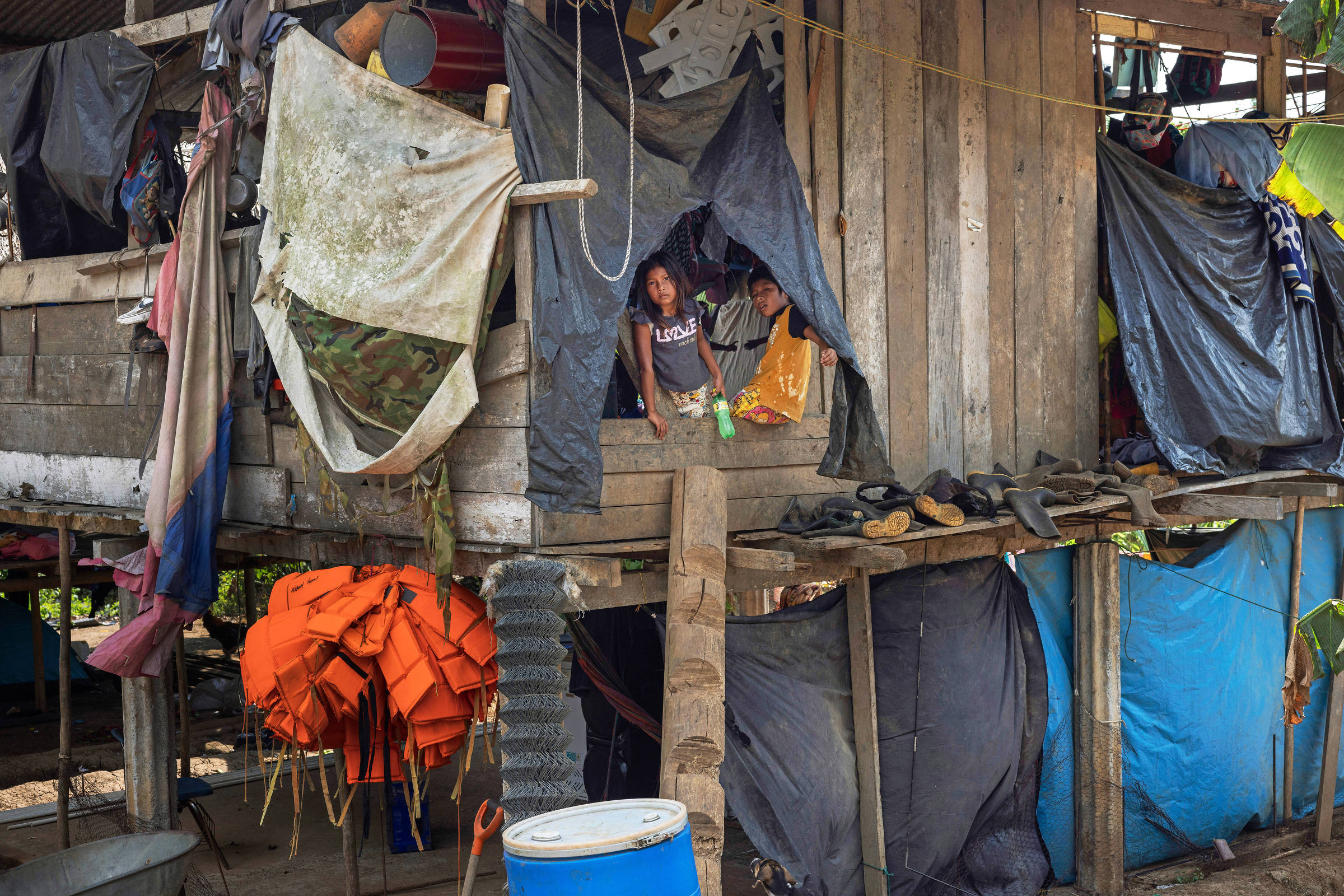
Younger people move away from plantations and shift towards the economy surrounding this flow; the environment feels the impact of waste produced by travelers
Esmeralda Dumasá, 50, had just been elected the first female “nokoe” (leader) of Bajo Chiquito, the small indigenous community of 495 inhabitants on the banks of the Tuqueza River that had its life transformed by immigration in Panama.
It is in this space of the Emberá and Wounaan peoples that around a thousand immigrants from various countries who have just survived the crossing of the Darién jungle have been disembarking daily.
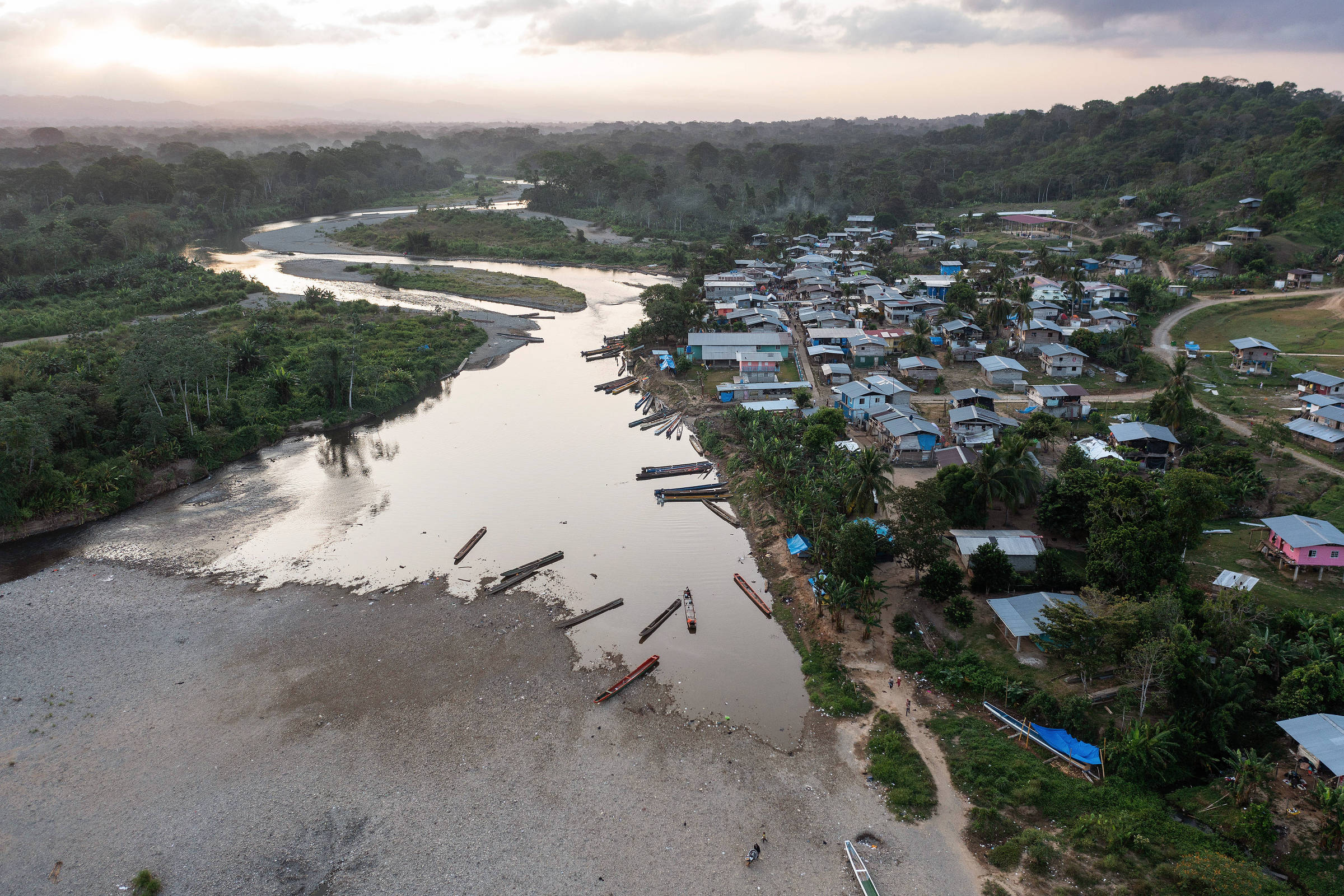
Aerial image of the indigenous community of Bajo Chiquito, through which the Tuqueza River flows - Lalo de Almeida/Folhapress
Recently inaugurated in the position she will hold for the next five years, Dumasá says she fears nothing in this new scenario. “We give thanks to God for the immigrants,” she says.
For her, travelers bring benefits. “We exchange cultures, languages. Look at my example: I knew nothing of English; now I can say chicken, fish, and many other things.”

Esmeralda Dumasá, 50, the new leader of Bajo Chiquito, poses for a photo in the indigenous community - Lalo de Almeida/Folhapress
The optimism is understandable. Located in the far east of Panama, Bajo Chiquito is part of the district of Cémaco, one of the two that make up the Emberá-Wounaan comarca, a semi-autonomous territory created in the heart of the Darién province in 1983.
Just over 10% of the Panamanian population is indigenous. Despite political autonomy, the region’s residents faced decades of neglect and disregard from local authorities.
The situation changed as the migration crisis worsened in the Darién Strait and attention turned to Bajo Chiquito. International organizations and the government itself became present.

Queue to pass through the migration control post of Panama’s National Border Service in Bajo Chiquito - Lalo de Almeida/Folhapress
Now, most of the young people and adults in this community and three other adjacent ones live off the economy surrounding migration. In addition to selling food and beverages to migrants arriving from the jungle in extreme conditions, many with injuries and dehydrated, they offer transportation: it is necessary to leave Bajo Chiquito to reach the migrant reception stations.
The indigenous people organize this transfer through piraguas, small canoes that travel along the waters of the Tuqueza to the Lajas Blancas station, on the Emberá comarca border. During the dry season, which lasts from mid-December to March, the river level decreases significantly, and the 45 km journey can take up to six hours.
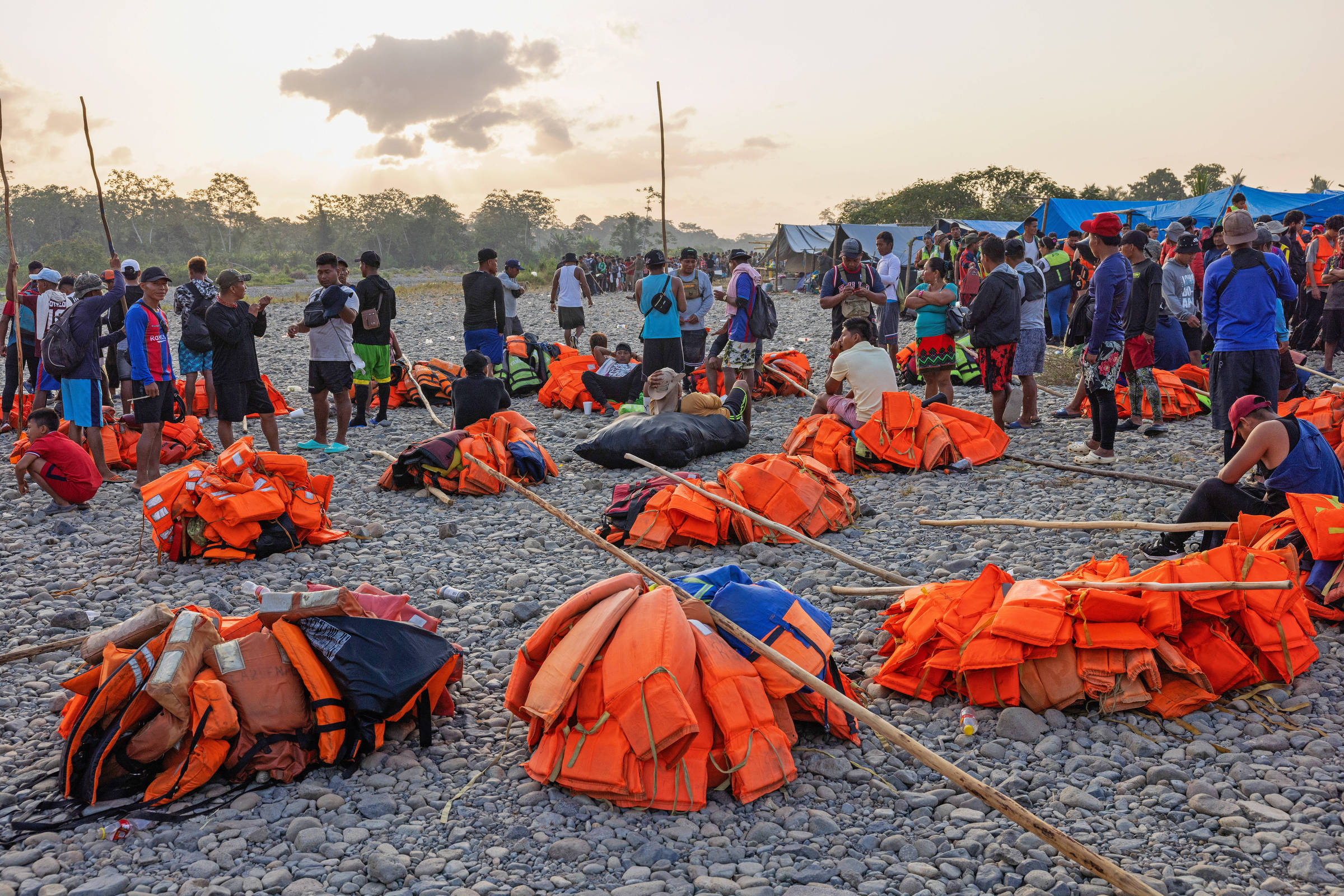
Local canoeists await their turn to transport migrants in their canoes from the community to the Lajas Blancas Migratory Reception Station - Lalo de Almeida/Folhapress
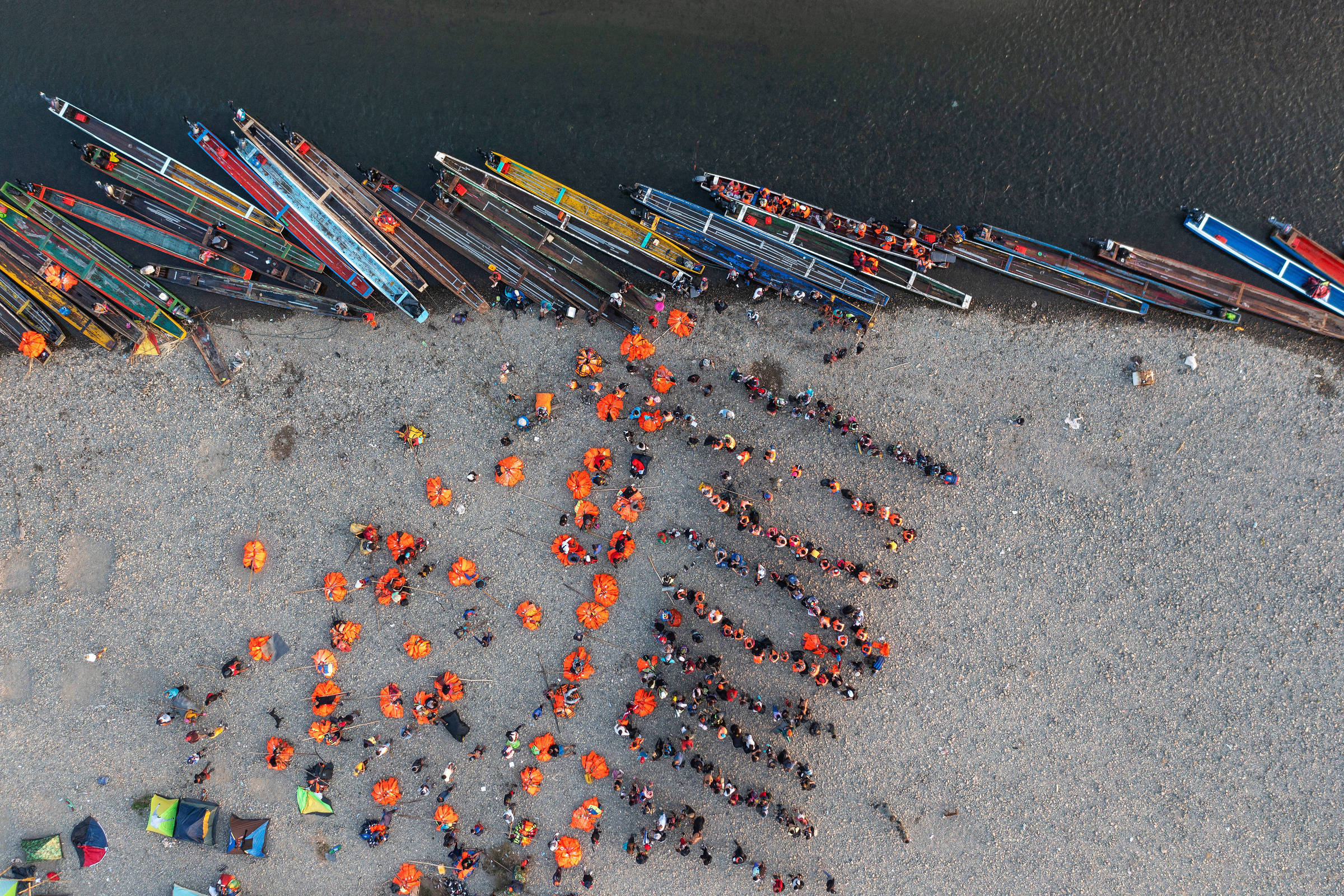
Aerial image of the flow of canoes in the early hours of a Wednesday at the end of January - Lalo de Almeida/Folhapress
Bajo Chiquito takes turns daily with Marraganti, Nuevo Vigia, and Villa Caleta in organizing the piraguas. Each day, around 1,200 people are taken to the shelters. Those over 10 years old must pay $25 (about R$ 125) for transportation.
“All of this has greatly changed the life of the community,” says piraguero Oneide Teucama while noting down on the sheet attached to a clipboard the number of immigrants boarding. “Those who were dedicated to agriculture are now here. That’s why the plantations are neglected. Today, they are only able to feed their own families,” he says.
On the banks of the Lajas Blancas community and, 35 kilometers away, in the Puerto Limón region, residents and public officials witness the transformation. It used to be common to see dozens of indigenous people disembarking to sell their banana and avocado crops in the cities. Now, only migrants appear. A few meters from Oneide, another piraguero who prefers not to be identified says that young people no longer want to work in agriculture.
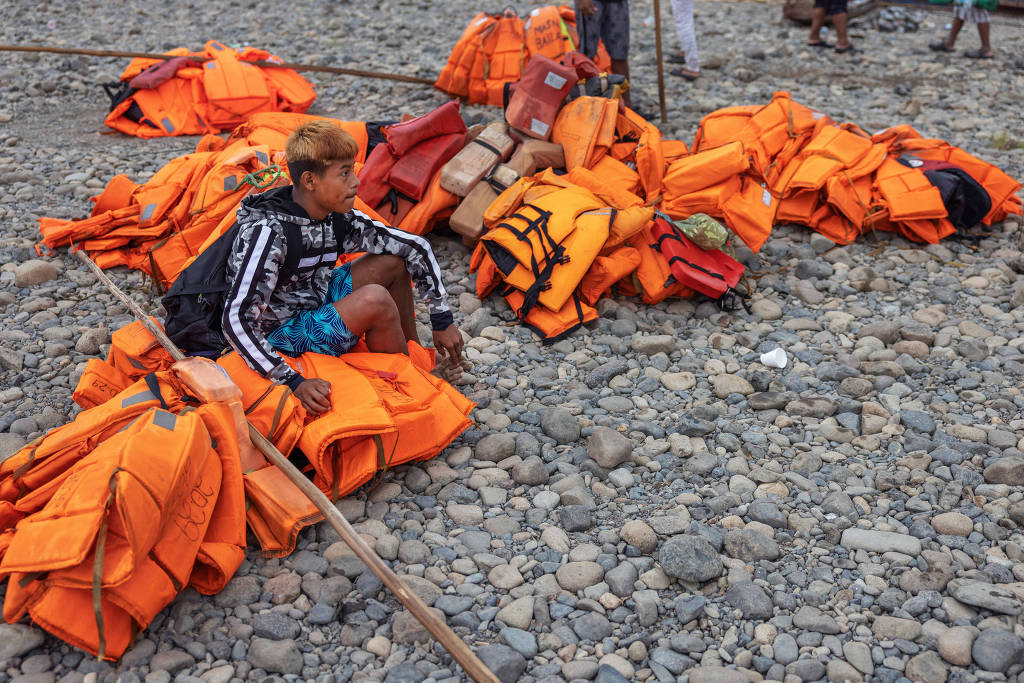
Canoeist waits for the departure of migrants along the Tuqueza River in Bajo Chiquito - Lalo de Almeida/Folhapress
The change in the environment is also visible. Both within the Darién jungle and in Bajo Chiquito and other communities, the volume of waste, especially plastic bottles, is striking. The material is collected by the indigenous people themselves and burned in an area further away from the houses. On social media, Panamanians have been campaigning to raise awareness about the impact in Darién, which is home to a national park.
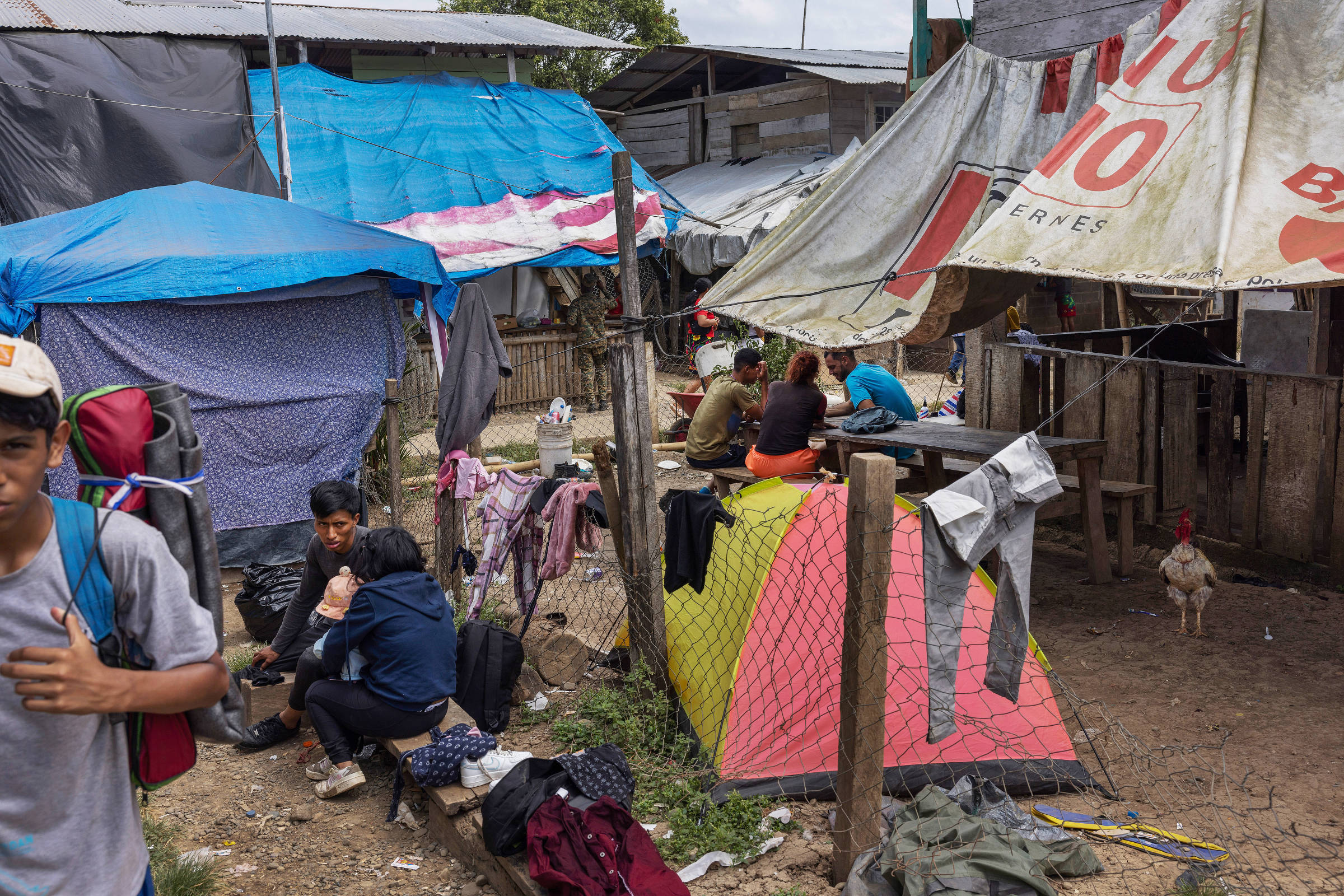
Makeshift tents serving as small businesses to cater to migrants in the indigenous community of Bajo Chiquito - Lalo de Almeida/Folhapress
“Bajo Chiquito was not like you have just seen,” says Commissioner (a type of delegate) Edgar Pitty, head of the 1st Eastern Brigade of Panama, at the regional headquarters of Senafront (National Border Service). “This migratory flow, with such a large number of people from all over the world, makes the culture practically disappear. They no longer think about hunting, only about transporting migrants. In the end, this will leave marks that may be discouraging in 10 or 15 years when it will no longer be possible to recover the traditions.”
Esmeralda, the new community leader, is concerned with more immediate issues. With the attention of organizations focused on the region, she wants to finally set up a new water supply project.
The idea is to stop pumping from the Tuqueza, known by migrants as the “river of death” due to those who succumb to the crossing in the jungle, and to capture water from a less polluted point. Which, soon, will probably also be threatened by the unceasing Darién flow.
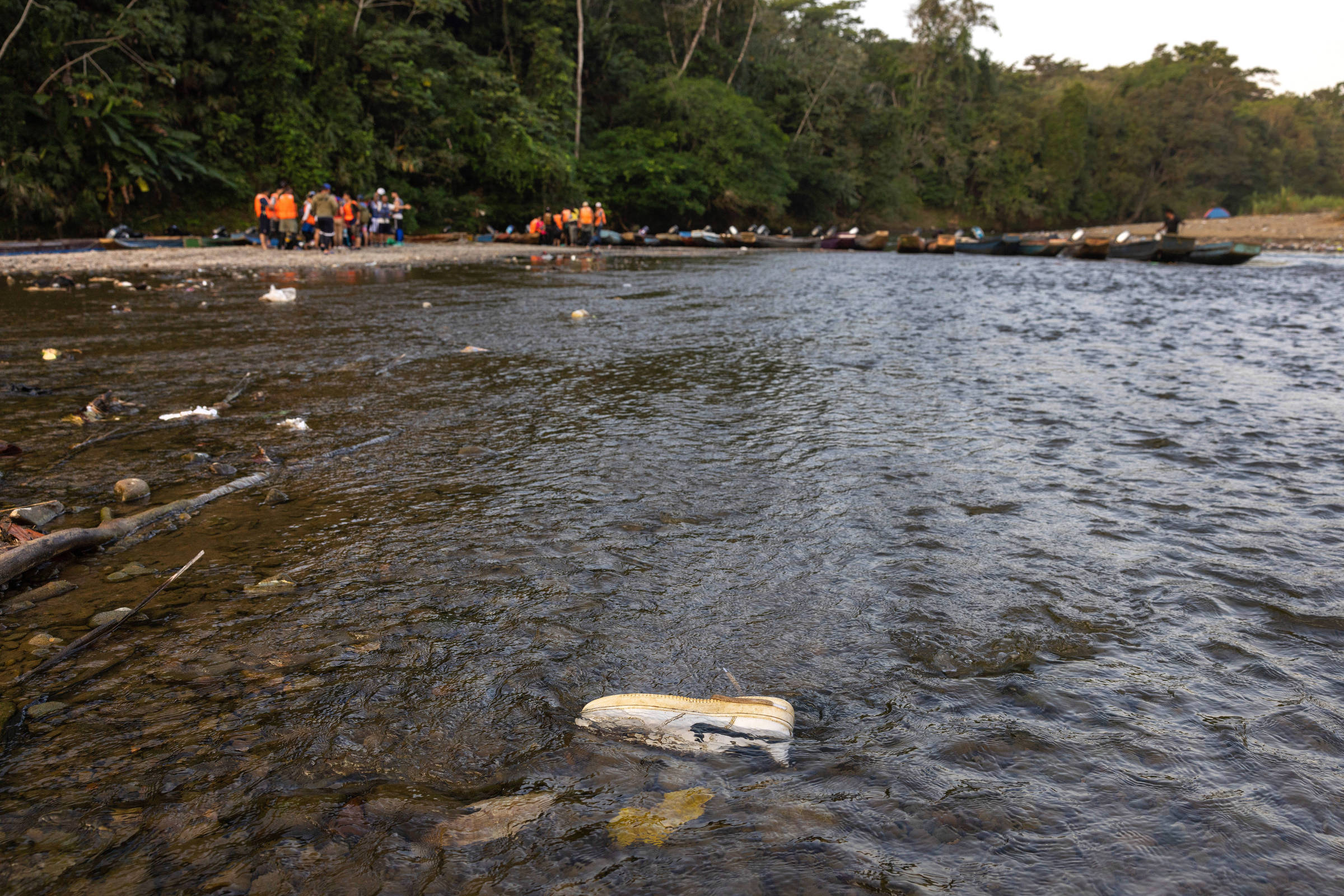
Abandoned migrant’s shoe in the Tuqueza River near the community of Bajo Chiquito - Lalo de Almeida/Folhapress